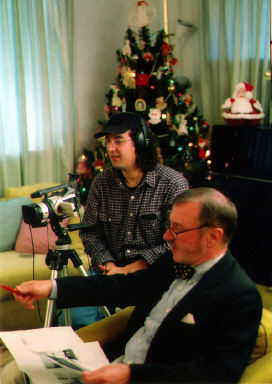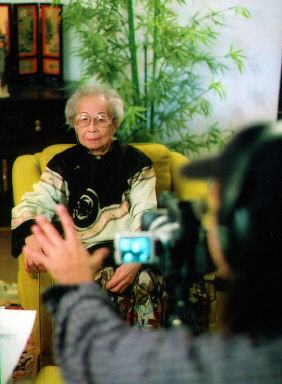
Discovering The Forgotten New Orleans Chinese Quarter
New Orleans paved over most of its old Chinatown in 1937 when the neighborhood was torn down to make way for a parking garage. A few stores moved to Bourbon Street in the French Quarter and continued on as the Chinese business center before succumbing to the ill wind of urban flight. Little physical evidence remains of the early presence of Chinese in New Orleans. Another parking garage proposal is expected to go before the City Council and if passed will obliterate the last five old buildings in an area once known as the “Chinese Quarter.” The new garage will stamp out the last physical ties to the hub of a unique early Chinese-American immigrant experience. The multitude of cars parading up and down the ramps will serve as the surrogate second line mocking fitfully the passing of a landmark. New Orleans will be a city where more than “care” forgot.
The five remaining buildings of the forgotten "Chinese Quarter" at the corner of Rampart and Tulane Streets:
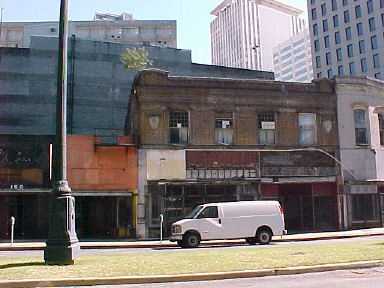


Why has it come to this in a city that takes so much pride in its rich and diverse heritage? How could this happen in a city where preserved historical landmarks form the cornerstones of its vibrant tourism industry? How could this happen at a time multi-cultural tourism is all the rage? Why the silence in a city with a well-established and vibrant modern Chinese-American community? Or more importantly why is there so little awareness and emphasis placed on its part of our collective heritage and historical landmarks? Could it be that we have already lost touch with that part of our collective past? There are so few visible imprints and footprint left from the Asian American experience of that era; every little bit is worth preserving for tomorrow.
The Chinese Merchants Association, located in the French Quarter:
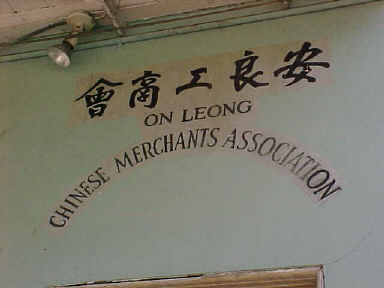

The city was once Mecca for Chinese contract laborers who left the plantations along the Mississippi River in the post-Civil War South. This city provided a refuge to the Chinese laborers escaping the anti-Chinese frenzy in the West Coast. This is also the city where early enterprising Chinese merchants made large fortunes running dried shrimp operations deep in the Louisiana Bayous. In this city a dedicated Christian Mission nurtured and guided the early assimilation of a fragile community of Chinese families. It was said that Dr. Sun Yat-Sen, the George Washington of modern China came to raise money for the revolution from the local Triad of Chinese free masons. New Orleans is where self proclaimed Chinese Cajun Cowboy Sheriff Harry Lee, the second most powerful politician in Louisiana today, was born and raised. This is also the city where the noted African-American political and civil rights leader Judge Revius Ortique recalls fondly of his Chinese grandfather. “Lotus Roots” run deep in this city. It probably is the best kept secret ingredient in the famed New Orleans cultural gumbo.
The Chinese Society crypt, in St. Louis Cemetery:
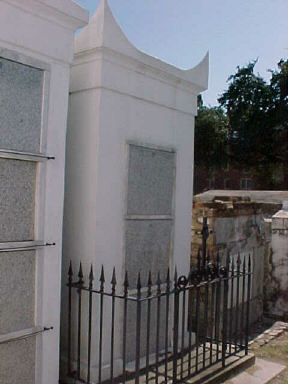
Researching into the long forgotten Chinatown surely could offer answers to the litany of intriguing questions. Exploring the past invariably leads to new insights into potent issues that present day Chinese Americans are grappling with. As the old saying goes, those who do not learn from history are destined to repeat it. Currently “Operation Lotus Roots” seeks to rediscover the long forgotten Chinese Quarter. The first phase will put Chinatown back on the literary map, connect it with the notable New Orleans historical preservation community and produce a visual medium to tell this unique Chinese-American experience with a southern and Creole flavor. Please support Operation Lotus Root by contributing financially or by making available articles, pictures or leads connected with the New Orleans Chinese history.
Shaie-Mei Temple
Louisiana Asian Heritage Fund Founder
Letter to the Editor,
published in the Times-Picayune
Subj: Re: Historic facade must be saved
From: SMTemple@aol.com
Date: Thu, 7 Dec 2000 14:43:05 EST
Dear Editor:
Ethnic communities have a long way to go when it comes to Historical Parity even in a city known for History and Historical Preservation. How else could one explain the fact that even after the HDLC came out with strong support for keeping these buildings' facade, the Chairman of the African-American Heritage Preservation Council still feels compelled to write a letter to the Times Picayune to appeal for public support. Like Chairman Young, I feel passionately about the preservation of the buildings mentioned in his letter to the Editor. I am of Chinese descent and these buildings represent the last significant physical structure tied to the once and largely forgotten Chinatown. I watch uncomprehendingly as these buildings are treated with callous disregard and threatened with the same fate in the new millennium as the old Chinatown in the 1930s - torn down to make way for a parking garage.
Even now I still hope against hope that these buildings can be preserved in the whole and not just the facade. I wish the government agencies and people with means in our city can find a way to work together and turn Gary Williams of Fannie Mae Partnership's observations into a commercial reality. Fannie Mae is instrumental in developing the fabulous "Venus Garden" project in Mid-City. Let's visualize the possibility he sees:
"I drove down Rampart and Tulane again. What a wonderful place for a "mixed use" development. Loft apartments for Artist and/or Musicians is a fabulous idea and the location (near the French Quarter) is excellent. Let's continue our dialogue as this kinds of inner city initiatives are highly valued at Fannie Mae. Your idea of partnering with the Jazz and Heritage Foundation will absolutely work, plus I think we could get the City, possibly the State and a local Lender to partner as well."
With imagination and teamwork, these buildings can be turned into a unique multicultural tourism Mecca for the CBD. Let's not tear down and destroy the last pieces of the once vibrant and ethnically diverse (African American, Chinese and Jewish) neighborhood and replacing it with yet another drab and architecturally and culturally insignificant structure. Our city's economic well-being rests on our ability to preserve our collective heritage creatively and diligently. Historically significant buildings are the most precious and irreplaceable strategic and commercial assets we have.
Sincerely Yours,
Shaie-Mei Temple
Book may shed light on China crisis
04/11/01 By Lolis Eric Elie Staff writer/The Times-Picayune
At first glance, the connections between New Orleans and China seem to be neither deep nor long-standing. Unlike visitors to San Francisco and New York, the people who come here never put Chinatown on their list of places to visit. But until the late 1930s, this city had a Chinatown that included several dozen buildings along Elks Place, Tulane Avenue, South Rampart, Common and South Liberty streets. Shaie-Mei Temple, a New Orleanian of Chinese descent, has dedicated herself to studying these connections and to drawing attention to the last few buildings of the old Chinatown in the 100 block of South Rampart Street. In the course of studying the connections between China and New Orleans, Temple unearthed a curious and rare document, which may help shed light on the crisis between our two nations regarding the American spy plane and the missing Chinese pilot.
Mind those manners
In 1900, Wu Ting Fang, envoy extraordinary and minister plenipotentiary of China to the United States, visited New Orleans. He was welcomed by Gov. Murphy J. Foster and is thought to have even attended the Rex Ball. In his 1914 book, "America Through the Spectacles of an Oriental Diplomat," Wu titled one chapter "American Manners." "In regard to manners neither China nor America find much favor with foreigners, though for diametrically opposite reasons," Wu wrote. "The Americans are accused of observing too few formalities and the Chinese of being too formal. "The Americans are direct and straightforward, not only in what they say and how they say it. When they come to see you they say their say in the most terse, concise and unambiguous manner. "In this way what a contrast they are to the Chinese, who never approach the subject utmost in their minds until polite courtesies are exchanged. These elaborate preludes and interludes may seem useless and superfluous to Americans but are considered essential to the Chinese who have raised correct deportment almost to the rank of religion.
"Lessons to learn"
Temple sees Wu's words as relevant today. "One hundred years later, even as we supposedly are becoming a global village, the Chinese and American leaders are still tripping over this manner divide noted by Wu," Temple said. "It goes without saying that American leadership, when dealing with the manner-conscious Confucian cultures, need to be more manner sensitive, and the Confucian cultures will have to reciprocate likewise when dealing with the manner efficient Americans," she said. Now if only we could get folks in Washington and Beijing to listen to this modern Chinese wisdom.. . . . . . .
Lolis Eric Elie can be reached at
lelie@timespicayune.com or (504) 826-3330.
Photographs from the Mrs. Hew interview, December, 1999, one of the few remaining New Orleanians who grew up in the Chinese Quarter. She recently celebrated her 93rd birthday:
